Costing Engineer
30+ Costing Engineer Interview Questions and Answers

Asked in HCLTech

Q. What kind of manufacturing operation process is involved to manufacture the product?
The manufacturing operation process depends on the type of product being manufactured.
The process can involve various stages such as design, raw material procurement, production, quality control, and packaging.
The type of manufacturing process can be batch production, continuous production, or job production.
Examples of manufacturing processes include injection molding, casting, machining, and assembly.
The process can also involve automation and robotics to increase efficienc...read more
Asked in SRI Gotec

Q. Can you read drawing, if so please tell us something about gd&t.
Yes, I can read drawings and have knowledge of GD&T.
GD&T stands for Geometric Dimensioning and Tolerancing.
It is a system used to define and communicate engineering tolerances.
GD&T uses symbols and annotations to specify the allowable variation in form, orientation, and location of features on a part.
It is important for ensuring that parts are manufactured to the correct specifications and fit together properly.
Examples of GD&T symbols include concentricity, perpendicularity,...read more
Costing Engineer Interview Questions and Answers for Freshers
Asked in Royal Autotech

Q. What is the formula for calculating the bending load in a press machine?
The formula for calculating the bending load in a press machine is based on the material's modulus of elasticity, moment of inertia, and the distance from the neutral axis.
The bending load can be calculated using the formula: M = (E * I) / c
M is the bending moment, E is the modulus of elasticity, I is the moment of inertia, and c is the distance from the neutral axis.
The modulus of elasticity represents the material's ability to resist deformation under an applied load.
The mo...read more

Asked in Ambit Switchgear

Q. What is DOL and star delta starter?
DOL stands for Direct-On-Line and is a type of motor starter. Star delta starter is another type of motor starter used for induction motors.
DOL is a simple and commonly used method of starting induction motors directly from the power supply.
It provides full voltage to the motor during starting, which can cause high starting current and mechanical stress.
Star delta starter, on the other hand, reduces the starting current and mechanical stress by initially connecting the motor ...read more

Asked in Kion India

Q. What is the process plan for the drawing that was shared?
The process plan for the drawing includes steps for material selection, machining operations, quality control, and cost estimation.
Identify the materials required for the drawing
Plan the machining operations needed to create the part
Establish quality control measures to ensure the part meets specifications
Estimate the cost of materials, labor, and overhead for the project
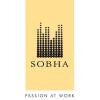
Asked in Sobha

Q. What is the standard construction process?
Construction standard processes ensure efficiency, safety, and quality in project execution through defined stages and practices.
Project Planning: Define scope, budget, and timeline. Example: Creating a Gantt chart for project milestones.
Design Phase: Develop architectural and engineering designs. Example: Using CAD software for detailed blueprints.
Procurement: Acquire materials and services needed for construction. Example: Sourcing steel and concrete from suppliers.
Construc...read more
Costing Engineer Jobs

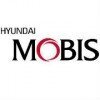
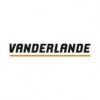

Asked in Hailstone Innovations

Q. What is the process for cost estimation of the eccentric shaft?
The process for cost estimation of the eccentric shaft involves analyzing material costs, manufacturing processes, labor costs, overhead expenses, and profit margins.
Gather information on the material cost of the eccentric shaft, including the type of material used and its price per unit.
Consider the manufacturing processes involved in producing the eccentric shaft, such as machining, forging, or casting, and estimate the associated costs.
Calculate the labor costs by determin...read more

Asked in Dhoot Transmission

Q. What level of experience do you have with Microsoft Excel?
I have extensive experience with Microsoft Excel, utilizing it for data analysis, budgeting, and reporting in various projects.
Proficient in using formulas and functions like VLOOKUP, SUMIF, and INDEX-MATCH for data analysis.
Experienced in creating pivot tables to summarize large datasets and extract meaningful insights.
Skilled in using conditional formatting to highlight key data points and trends.
Developed complex financial models for project costing and forecasting using E...read more
Share interview questions and help millions of jobseekers 🌟

Asked in SRI Gotec

Q. What is your understanding of project development?
Project development refers to the process of planning, designing, executing, and closing a project.
It involves identifying project goals and objectives
Creating a project plan and timeline
Allocating resources and budget
Executing the plan and monitoring progress
Closing the project and evaluating its success
Examples include building construction, software development, and event planning

Asked in HCLTech

Q. What is the cycle time for the boring operation?
The cycle time for boring operation depends on various factors such as material, tooling, and machine capabilities.
Cycle time can be calculated using the formula: Cycle time = (60 x cutting length) / (cutting speed x number of cutting edges)
Factors affecting cycle time include material hardness, tool wear, and machine rigidity.
Optimizing cutting parameters and tool selection can reduce cycle time and improve efficiency.

Asked in Kion India

Q. What is your understanding of surface treatment?
Surface treatment refers to the process of altering the surface of a material to improve its properties or appearance.
Surface treatment involves applying a coating, plating, or other treatment to the surface of a material.
Common surface treatment methods include painting, anodizing, electroplating, and powder coating.
Surface treatment can improve properties such as corrosion resistance, wear resistance, and aesthetics.
Examples of surface treatment include chrome plating on au...read more
Asked in Royal Autotech

Q. What is the formula for gross weight?
The formula for gross weight is the sum of the weight of an object and the weight of any additional components or cargo.
Gross weight = Weight of object + Weight of additional components or cargo
The formula is used to calculate the total weight of an object, including any added weight
For example, in the automotive industry, the gross weight of a vehicle would include the weight of the vehicle itself plus the weight of passengers and cargo

Asked in Kion India

Q. What is your understanding of costing?
Costing refers to the process of estimating and calculating the expenses involved in producing a product or providing a service.
Costing involves analyzing all the costs associated with a product or service, including materials, labor, overhead, and other expenses.
It helps in determining the selling price of a product or service by adding a markup to the total cost.
Costing also involves cost control measures to ensure that expenses are kept within budget and profitability is m...read more
Asked in Royal Autotech

Q. What is prime cost ? Types of overhead?
Prime cost is the direct cost of materials and labor required to produce a product. Overhead costs include indirect expenses.
Prime cost includes the cost of raw materials and direct labor.
It does not include indirect expenses like rent, utilities, or administrative costs.
Types of overhead costs include factory overhead, administrative overhead, and selling and distribution overhead.
Factory overhead includes expenses like factory rent, utilities, and maintenance.
Administrative...read more

Asked in HCLTech

Q. Do you have experience with casting?
Yes, I have exposure of casting.
I have worked on various casting projects during my engineering studies.
I have also completed an internship at a casting company where I gained hands-on experience.
I am familiar with different casting methods such as sand casting, investment casting, and die casting.
I have knowledge of casting materials and their properties.
I am proficient in using casting simulation software to optimize the casting process.
Asked in Royal Autotech

Q. What are the elements of cost?
Elements of cost refer to the various components that contribute to the total cost of a product or service.
Direct materials: The cost of raw materials used in production.
Direct labor: The cost of labor directly involved in the production process.
Overhead: Indirect costs such as rent, utilities, and depreciation.
Indirect materials: The cost of materials indirectly used in production, like lubricants or cleaning supplies.
Indirect labor: The cost of labor indirectly involved in ...read more

Asked in HCLTech

Q. What are progressive tools?
Progressive tools are dies that perform multiple operations on a single press stroke.
Progressive tools are used in metal stamping to create complex parts with high precision.
They consist of a series of stations, each performing a different operation on the material.
The material is fed through the tool and each station adds a new feature to the part.
Examples of parts made with progressive tools include brackets, clips, and electrical contacts.

Asked in Tata Motors

Q. Describe the complete process of creating a costing template.
A costing template process involves gathering cost data, analyzing expenses, and creating a structured format for cost estimation.
Gather all relevant cost data including materials, labor, overhead, and other expenses
Analyze the cost data to determine the cost drivers and factors affecting the overall cost
Create a structured template with sections for each cost component and formulas for calculation
Include provisions for future cost updates and adjustments based on changes in ...read more
Asked in Sainik Spring Works

Q. What do you know about cost engineering?
Cost engineering involves analyzing and estimating the costs of projects or products.
Cost engineering involves analyzing and estimating the costs of projects or products.
It includes cost estimation, cost control, and cost management.
Cost engineers work closely with project managers to develop budgets and monitor expenses.
They use tools such as cost estimating software and historical data to make accurate cost projections.
Cost engineering helps organizations make informed deci...read more

Asked in Aarti Steels

Q. What is VCB?
VCB stands for Vacuum Circuit Breaker.
VCB is an electrical switch that uses vacuum as the arc quenching medium.
It is used to protect electrical equipment from short circuits and overloads.
VCBs are commonly used in power distribution systems and industrial applications.
They offer faster and more reliable operation compared to traditional circuit breakers.
Examples of VCB manufacturers include ABB, Siemens, and Schneider Electric.
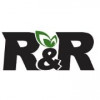
Asked in Rr Autotech

Q. What is the current raw material rate?
The current Rm rate refers to the rate of raw materials used in production.
The current Rm rate is the cost of raw materials per unit of production.
It is important for costing engineers to monitor and analyze the Rm rate to ensure profitability.
Factors such as market prices, supplier costs, and exchange rates can impact the Rm rate.
For example, if the current Rm rate for steel is $2 per pound, and a product requires 10 pounds of steel, the Rm cost would be $20.

Asked in Ambit Switchgear

Q. What is MCCB?
MCCB stands for Molded Case Circuit Breaker. It is an electrical protection device used to protect electrical circuits from overloads and short circuits.
MCCB is a type of circuit breaker that is enclosed in a molded case made of insulating material.
It is designed to provide protection against overcurrents, such as overloads and short circuits.
MCCBs are commonly used in industrial and commercial applications to protect electrical equipment and systems.
They have adjustable trip...read more

Asked in Tata Motors

Q. Can you perform bottom-up costing?
Yes, I can do bottom up costing by breaking down the cost of each individual component or process involved in a project.
Break down the cost of each individual component or process involved in a project
Calculate the cost of materials, labor, overhead, and any other expenses for each component
Sum up the costs of all components to get the total project cost
Use this detailed costing to make informed decisions and optimize project budgets

Asked in Larsen & Toubro Limited

Q. What are the different types of material grades?
Material grades refer to the specific quality and composition of materials used in manufacturing processes.
Material grades can vary based on the type of material being used, such as steel, aluminum, plastic, etc.
Each material grade has specific properties and characteristics that make it suitable for certain applications.
Examples of material grades include AISI 304 stainless steel, 6061-T6 aluminum, and ABS plastic.
Material grades are often designated by a numerical or alphan...read more
Asked in Royal Autotech

Q. Write Cost pattern in paper ?
The cost pattern in paper refers to the analysis and identification of cost factors and trends in the paper manufacturing process.
Identify the cost drivers in paper production such as raw materials, labor, energy, and equipment.
Analyze the cost structure and allocation methods used in the paper manufacturing industry.
Examine the impact of economies of scale and production volume on cost patterns.
Consider the influence of market demand, competition, and pricing strategies on c...read more

Asked in Tata Motors

Q. Define MHR and the steps to calculate MHR.
MHR stands for Maximum Heart Rate, which is the highest heart rate a person can achieve during exercise.
MHR is typically calculated using the formula: 220 - age
For example, the MHR for a 30-year-old person would be 190 beats per minute (220 - 30)
MHR is used to determine target heart rate zones for exercise intensity

Asked in Tata Motors

Q. Explain your cost breakup strategy.
Cost breakup strategy involves analyzing and categorizing all costs associated with a project or product.
Identify all direct and indirect costs related to the project or product
Categorize costs into materials, labor, overhead, and other expenses
Analyze cost drivers to understand the factors influencing costs
Allocate costs based on activity-based costing or other methods
Regularly review and update cost breakdown to ensure accuracy and efficiency
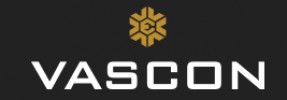
Asked in Vascon Engineers

Q. What is BBS in MT?
BBS in MT stands for Base Band Subsystem in Mobile Telecommunications.
BBS in MT is responsible for managing the physical layer of the mobile network.
It includes functions such as modulation, coding, and transmission of data.
Examples of BBS in MT components include transceivers, antennas, and baseband processors.

Asked in Vascon Engineers

Q. What is steel in metric tons (MT)?
Steel in metric tons (MT) refers to the weight of steel measured in metric tons.
Steel in metric tons (MT) is a common unit of measurement used in the steel industry.
1 metric ton is equal to 1,000 kilograms or approximately 2,204.62 pounds.
For example, if a shipment of steel weighs 50 metric tons, it means the weight of the steel is 50,000 kilograms.
Asked in ELB Engineering Services

Q. Fabrication of LV panel
Fabrication of LV panel involves assembling low voltage electrical components into a panel for distribution and control.
Fabrication process includes cutting, drilling, bending, and assembling metal sheets for the panel enclosure.
Wiring and connecting electrical components such as circuit breakers, relays, and meters inside the panel.
Testing the panel for functionality and safety before installation.
Examples of LV panel components: circuit breakers, contactors, busbars, meters...read more
Interview Questions of Similar Designations
Interview Experiences of Popular Companies








Reviews
Interviews
Salaries
Users

















